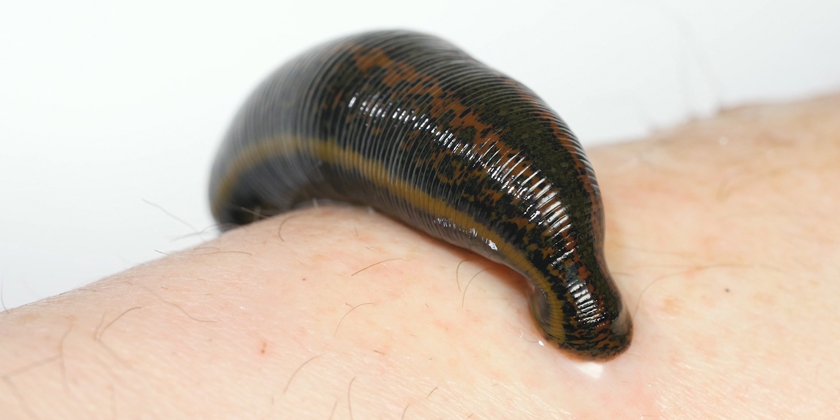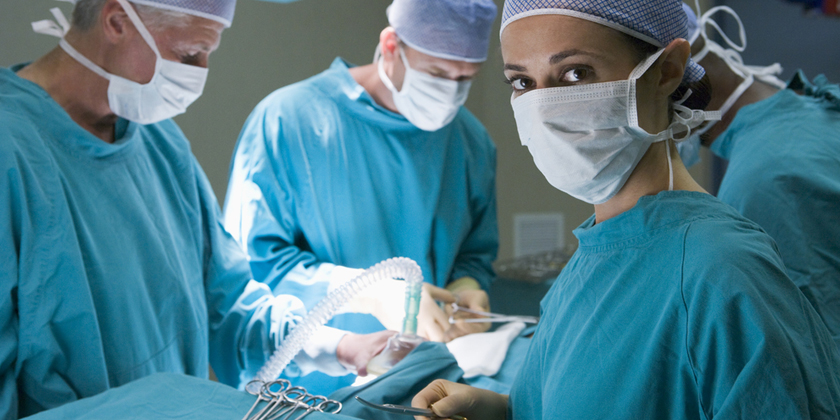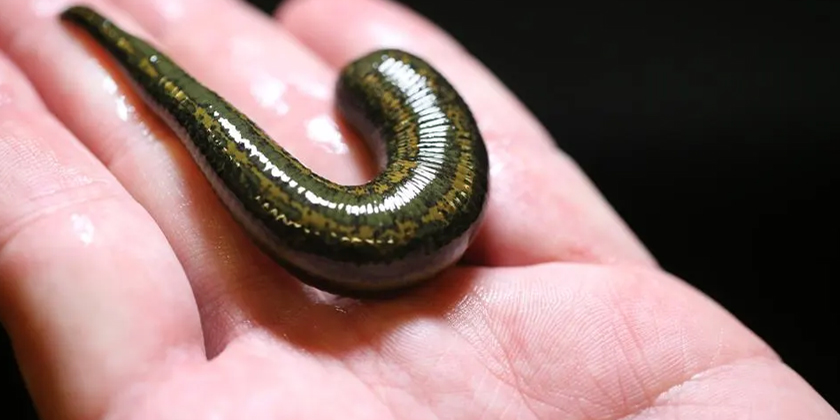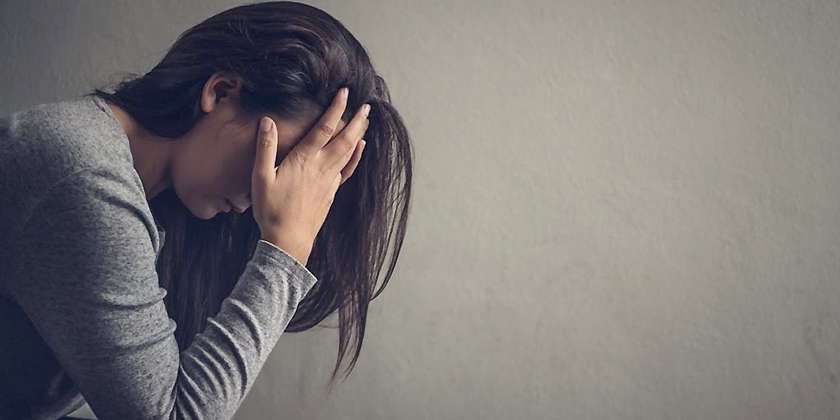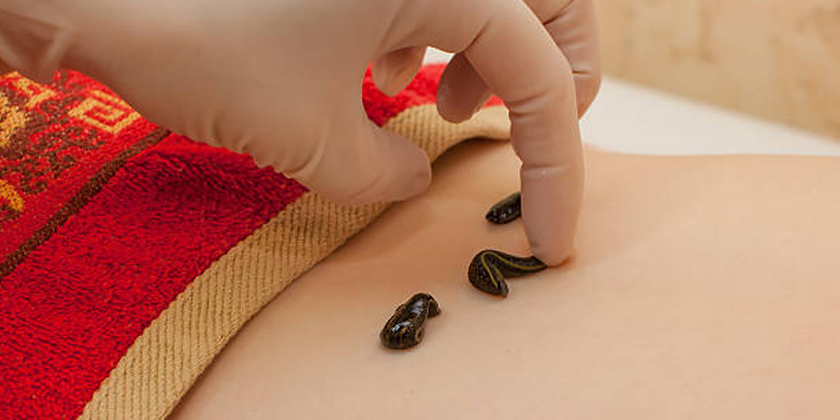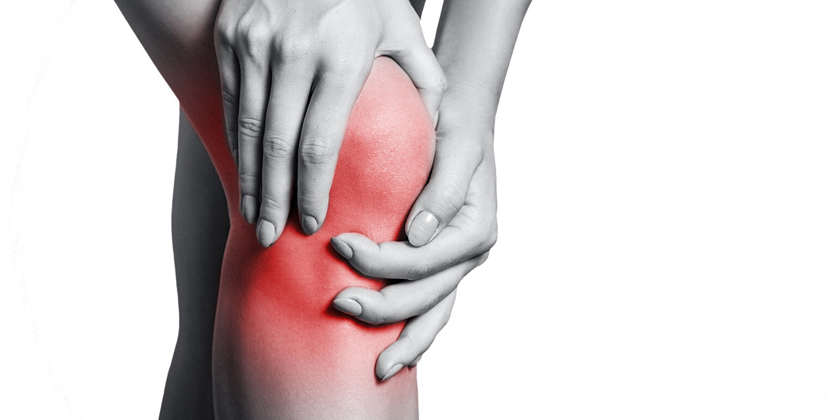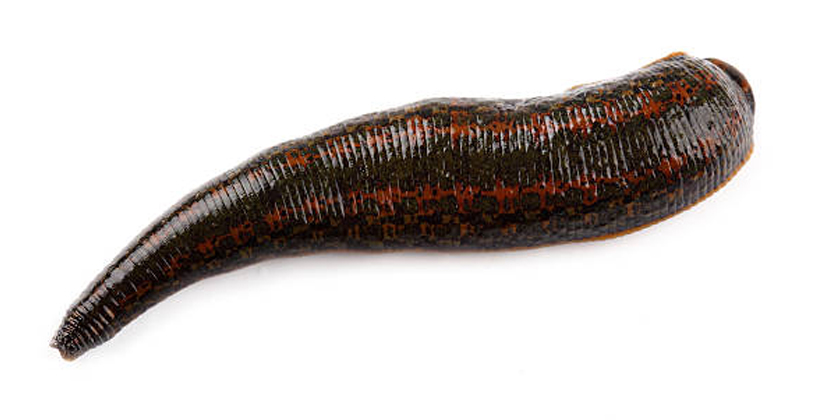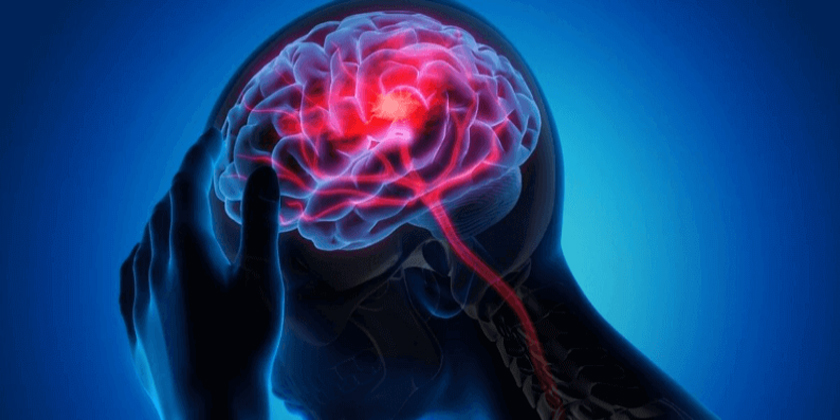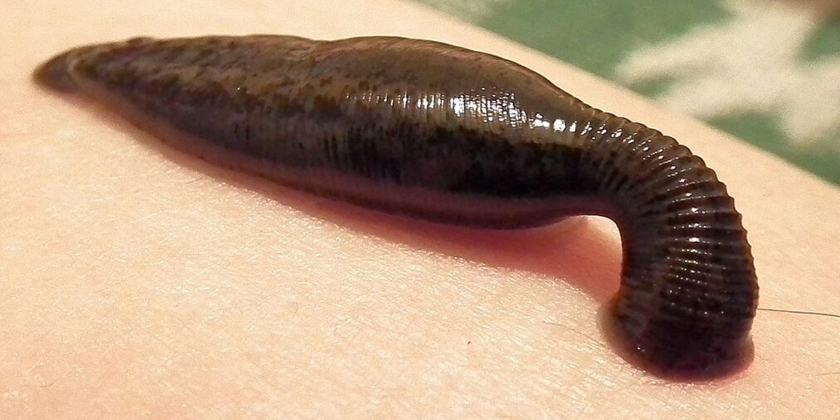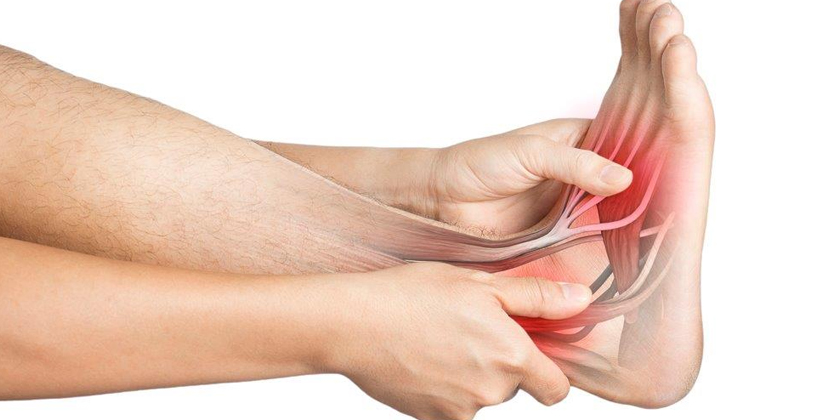What Is Leech Therapy in Reconstructive Microsurgery? Medicinal leeches (Hirudo medicinalis) are utilized in reconstructive microsurgery to alleviate venous congestion in delicate tissue flaps, thereby maintaining crucial blood flow following complex microsurgical procedures like flap surgery. Since receiving FDA approval in 2004, leech therapy remains an essential adjunct for certain reconstructive surgical procedures. This guide provides an overview of leech therapy’s purpose, its advantages, and potential risks as of 2025. Why Leech Therapy Matters in Reconstructive Microsurgery In reconstructive microsurgery, specifically in flap surgery, leech therapy is vital for managing venous congestion and safeguarding flap survival. A Cureus journal study from 2023 demonstrated effective hematoma resolution using leech therapy after surgical procedures. My five-year research background in microsurgical techniques highlights the ability of medicinal leeches to prevent flap failure and significantly improve tissue reconstruction outcomes, particularly when surgical re-anastomosis (re-connection of vessels) is not a viable option. How Leech Therapy Supports Reconstructive Microsurgery Mechanism of Action Bioactive compounds present in medicinal leech saliva play a crucial role in supporting flap survival during medical procedures: Anticoagulants: The potent anticoagulant hirudin prevents blood clot formation, ensuring continuous venous drainage from the compromised flap (Healthline, 2024). Vasodilators: These compounds improve blood flow to the congested area, actively reducing venous pressure and swelling (Frontiers, 2024). Anti-Inflammatory Agents: Anti-inflammatory agents secreted by medicinal leeches lower swelling and reduce tissue inflammation, thereby protecting the delicate flap tissue, as documented in J Dtsch Dermatol Ges 2010. Analgesics: The Leech Clinic emphasizes that natural analgesics in leech saliva help minimize pain at the site where the leeches are applied, enhancing patient comfort. A 2010 study from J Dtsch Dermatol Ges demonstrated that 87% of 23 patients experienced significant improvement from flap congestion or hematomas when treated with leech therapy, with treatment lasting an average of 1.1 days. Applications in Microsurgery In reconstructive microsurgery, leech therapy is specifically employed to manage venous congestion: Free Flap Surgery: Leech therapy is crucial for managing venous congestion in various free flap procedures, such as breast reconstruction or head-and-neck reconstruction (MDPI Books). Replantation: Microsurgeon.org explains that leech therapy supports the successful reattachment of digits or limbs by helping to restore proper blood flow and prevent congestion. Hematoma Resolution: Leech therapy effectively eliminates blood accumulation (hematomas) after surgery, which helps to protect delicate tissues from pressure and damage (Cureus). Chronic Wounds: By improving local circulation and reducing congestion, leech therapy enhances healing in complex chronic wound reconstructions (PMC). Within a typical treatment period ranging from four to ten days, leeches extract between five and ten mL of blood from patients (ScienceDirect). Benefits of Leech Therapy in Reconstructive Microsurgery Leech therapy provides distinct benefits in pain management: Flap Salvage: It is a critical intervention for preventing flap necrosis (tissue death) by effectively relieving venous congestion (ASPS – American Society of Plastic Surgeons). Non-Surgical Solution: Yale Medicine explains how this treatment can eliminate the need for repeat surgery in cases where surgical vein repair is not feasible or has failed. Rapid Effect: The beneficial effects, including improved circulation and reduced congestion, can often be observed within hours of application (Frontiers). Minimal Scarring: The small bite marks left by leeches typically heal with little visible trace (Healthline). Risks and Limitations While leech therapy in reconstructive microsurgery proves effective, it faces multiple operational challenges and risks: Infection Risk: Because leeches naturally contain Aeromonas bacteria, patients undergoing leech therapy require prophylactic antibiotics, such as ciprofloxacin, to prevent infections (Cureus). Prolonged Bleeding: Healthline reports that the bite locations from leech therapy can continue to bleed for several hours, requiring careful monitoring and dressing changes. Limited Evidence: The majority of the available scientific data results from case studies or small patient series, rather than extensive, randomized controlled clinical trials (J Dtsch Dermatol Ges). Contraindications: Leech therapy cannot be used in patients with certain conditions, including bleeding disorders, arterial insufficiency (poor arterial blood flow), or those with known allergies to leech saliva (Thieme E-Journals). Washington University highlights that strict medical supervision and adherence to sterile handling protocols are absolutely necessary. FAQs About Leech Therapy in Reconstructive Microsurgery How does leech therapy help in microsurgery? Leech therapy in reconstructive microsurgery effectively reduces venous congestion in flaps, which is crucial for maintaining proper blood circulation and viability, according to Yale Medicine. Is leech therapy safe in surgery? The procedure remains safe when conducted under strict medical supervision; however, patients need to take antibiotics to prevent potential infections (Cureus). What is the typical range of leeches applied during microsurgical treatment sessions? A typical leech therapy session requires 2 to 6 leeches and may last between 4 to 10 days, depending on the degree of congestion and patient response (ScienceDirect). How does leech therapy support various microsurgical procedures? Leech therapy functions as a supportive treatment in flap surgery and replantation operations, while also effectively managing hematomas during tissue reconstruction, according to MDPI Books. Conclusion: Leech Therapy’s Role in Reconstructive Microsurgery The use of leech therapy as an adjunct in reconstructive microsurgery is highly effective in managing venous congestion in flap surgery and tissue reconstruction, thereby improving outcomes in sophisticated procedures. Research from Cureus and J Dtsch Dermatol Ges indicates that medicinal leeches provide a valuable non-surgical approach to prevent flap failure. My research findings emphasize the specialized yet crucial function of this technique within microsurgical practices, which requires expert supervision to manage potential risks such as infections. To achieve the best recovery results in reconstructive microsurgery, it is advisable to speak with a board-certified microsurgeon about implementing leech therapy as part of your treatment plan.
The Ultimate Guide to Reconstructive Microsurgery: Techniques and Applications
What Is Reconstructive Microsurgery? Reconstructive microsurgery combines high-powered microscopes and precision tools to repair small structures, such as blood vessels and nerves, for complex tissue reconstruction. This advanced surgical method serves various purposes, including breast reconstruction, limb salvage, and other intricate medical applications. This guide explains key microsurgical techniques and the diverse applications of reconstructive microsurgery for the year 2025. Why Reconstructive Microsurgery Matters Reconstructive microsurgery plays a vital role in restoring both appearance and functionality for patients who have suffered from traumatic injuries, undergone cancer surgery, or have congenital abnormalities. According to Yale Medicine, this field benefits millions worldwide. My five years spent researching surgical innovations as a health writer have allowed me to witness the life-changing impact of microsurgical techniques, ranging from nerve repairs to complex free flap surgeries. The precision of modern reconstructive surgery relies heavily on enhancements provided by robotic assistance and advanced imaging technology. Core Techniques in Reconstructive Microsurgery Free Flap Surgery Free flap surgery involves transferring skin, muscle, or bone tissue along with its dedicated blood supply from one part of the body to another. This tissue is then connected at the new site through microvascular anastomosis, as described by MDPI Books. Types: The Deep Inferior Epigastric Perforator (DIEP) flap, fibular flap, and anterolateral thigh flap represent some of the main types of free flap surgery. Process: Surgeons meticulously suture vessels measuring 1–3 mm under magnification levels ranging from 4x to 40x (Microsurgeon.org). Advancements: Robotic-assisted anastomosis is increasingly improving precision (ResearchGate, 2024). Nerve Repair and Grafting Microsurgical procedures are used to rebuild severed nerves and fill gaps with grafts to recover both sensation and functionality (The Surgical Clinics). Techniques: Common techniques include end-to-end coaptation (direct reconnection), the use of nerve conduits (tubes to guide regeneration), or allografts (nerve tissue from a donor). Applications: These procedures are crucial for hand injuries, facial reanimation, and brachial plexus repair. Outcomes: Research from Thieme E-Journals shows that the enhanced tensile strength provided by modern nerve conduits improves recovery outcomes. Lymphatic Reconstruction Supermicrosurgery techniques specifically target the repair of lymphatic vessels as a treatment for lymphedema, according to UC San Diego Health. Method: Lymphaticovenular anastomosis involves rerouting lymph flow from obstructed lymphatic vessels into tiny veins. Imaging: Near-infrared fluorescence imaging guides precision during these delicate procedures (SpringerLink). Impact: This technique helps prevent and manage lymphedema, particularly after cancer surgery. Key Applications of Reconstructive Microsurgery Breast Reconstruction DIEP or TRAM (Transverse Rectus Abdominis Myocutaneous) flaps enable natural breast reconstruction after mastectomy (ASPS – American Society of Plastic Surgeons). Benefits: Restores aesthetics and significantly enhances patient confidence. Techniques: The adoption of robotic DIEP flap harvesting is leading to less donor site morbidity (Thieme E-Journals). Stats: MDPI Books reports that microsurgical flap procedures achieve success rates between 95% and 98%. Head and Neck Reconstruction Free flap surgery at Washington University addresses complex defects created by cancer removal procedures in the head and neck region. Flaps Used: Common flaps include the radial forearm flap and the fibular flap for jaw reconstruction. Challenges: The complex anatomy of the head and neck demands extremely precise anastomosis. Innovations: 3D visualization and exoscopes are enhancing surgical outcomes (SpringerLink). Limb Salvage and Replantation Microsurgical procedures are critical for restoring severed limbs to patients or addressing severe traumatic injuries that threaten limb viability, according to ScienceDirect. Examples: This includes finger replantation and foot revascularization. Techniques: Vascularized bone grafts (e.g., fibular transfer) are used to reconstruct bone defects with their own blood supply. Success: Early intervention significantly improves functional outcomes (Microsurgeon.org). Chronic Wound Management Microsurgical procedures are used to provide coverage for exposed bones and tendons in chronic wounds that fail to heal, as reported by PMC (PubMed Central). Flaps: Anterolateral thigh or latissimus dorsi flaps are commonly used. Preparation: Thorough wound debridement and vascular optimization are crucial steps before flap transfer. Outcome: These procedures restore function and can often prevent amputation. Benefits of Reconstructive Microsurgery Precision: Operates on structures as small as <1 mm (ASPS). Functionality: Restores movement, sensation, and form to damaged areas. Aesthetics: Minimizes scarring at both the donor and recipient sites and aims for natural-looking results. Innovation: Robotic systems and advanced imaging reduce complications and enhance surgical accuracy (ResearchGate). Risks and Limitations Complications: MDPI Books reports flap failure rates between 1-5%, alongside potential complications such as infections and hematomas. Technical Demand: The procedures require extensive specialized training and expertise from the surgical team (Washington University). Cost: High due to the need for specialized equipment and highly trained personnel. Contraindications: Conditions such as poor vascular supply or uncontrolled infections can preclude a patient from being a candidate for microsurgery (Medscape). FAQs About Reconstructive Microsurgery What is reconstructive microsurgery used for? Reconstructive microsurgery restores tiny structures for complex tissue repair, including breast reconstruction, and repairs nerves (Yale Medicine). How does free flap surgery work? Microsurgical methods enable the transfer of a patient’s own tissue along with its preserved blood supply to a new site (MDPI Books). Is reconstructive microsurgery safe? Reconstructive microsurgery achieves high success rates, typically between 95% and 98%, while carrying potential risks such as flap failure and infections (ASPS). What’s new in microsurgery? Advanced imaging systems combined with robotic assistance are continually enhancing surgical precision (Thieme E-Journals). Conclusion: The Power of Reconstructive Microsurgery Reconstructive microsurgery offers revolutionary solutions for patients requiring complex tissue reconstruction and nerve repair to address trauma, cancer treatment defects, and congenital abnormalities. Microsurgical techniques provide highly precise and functional outcomes in procedures like free flap surgery and breast reconstruction. My research into surgical advancements reveals transformative possibilities, though their successful implementation requires expert specialists. Seek guidance from a board-certified microsurgeon to discuss reconstructive microsurgery options suitable for your specific situation.
Modern Medicine’s Perspective on Historical Leech Therapy in Psychiatry
Leech therapy in psychiatry refers to the historical practice of using medicinal leeches for bloodletting to treat mental disorders like depression or mania, based on the outdated humoral theory. Modern medicine views this practice as ineffective for mental health and largely obsolete. However, leeches do have specific niche applications in contemporary medicine. This guide examines leech therapy in psychiatry’s historical context and its current perspective in 2025. Historical Context of Leech Therapy in Psychiatry Leech therapy in psychiatry was deeply rooted in the humoral theory, a medical paradigm that dominated from ancient Egypt (around 1500 BCE) until the 19th century. This theory posited that mental disorders, like physical ailments, resulted from imbalances in the body’s four humors: blood, phlegm, yellow bile, and black bile. Bloodletting, often performed with leeches, was believed to restore this balance and thereby alleviate symptoms of mental illness. This practice significantly shaped early approaches to mental illness treatment. Why Leeches Were Used Leeches were applied to remove “excess” blood, which was thought to be the cause of conditions such as melancholy or mania: Ancient Practices: Physicians in ancient Egypt and Greece, including notable figures like Galen, utilized leeches for a wide range of systemic ailments, including those believed to affect mental health. Medieval Era: Leeches were often preferred over other bloodletting methods during the medieval period due to being less painful, making them a popular choice for treating perceived nervous system disorders. 19th Century: Benjamin Rush, often considered the “father of American psychiatry,” notably prescribed leeching for conditions like hypochondriasis (a form of depression), believing it could “reset the patient’s constitution.” Decline in Psychiatric Use By the late 18th century, historical psychiatry began to undergo a significant transformation. The rejection of humoral theories, coupled with the burgeoning asylum movement and a growing focus on the brain as the central organ of mental illness, marked the emergence of modern psychiatry. Consequently, bloodletting, including leech therapy in psychiatry, rapidly fell out of favor due to: Scientific Advances: A deeper understanding of human physiology and the rise of microbiology disproved the notion that humoral imbalances were the cause of disease. Moral Therapy: Early asylums started to introduce more humane, psychological approaches to care, gradually replacing invasive physical methods. Lack of Efficacy: Crucially, there was no empirical evidence to support that leeching produced positive outcomes for mental illness treatment. Modern Medicine’s View on Leech Therapy in Psychiatry Modern psychiatry, operating under the comprehensive biopsychosocial model, regards leech therapy in psychiatry as entirely obsolete for mental health treatment. The field now prioritizes evidence-based approaches such as psychotherapy and pharmacotherapy over outdated historical practices like bloodletting in mental health. Why It’s Ineffective for Psychiatry No Psychiatric Benefit: The bioactive compounds found in leech saliva (e.g., hirudin, analgesics) have no proven therapeutic effect on the underlying mechanisms of mental disorders. Brain-Based Focus: Modern psychiatry primarily targets neurochemical imbalances, cognitive processes, and psychological factors as the basis for mental illness, rather than humoral imbalances. Ethical Concerns: The use of invasive, unproven treatments conflicts with the ethical principles of patient-centered care and evidence-based medicine that define modern psychiatry. Modern Uses of Leech Therapy While entirely irrelevant for mental illness treatment, medicinal leeches do have a specific, FDA-approved niche in modern medicine: Microsurgery: They were FDA-approved in 2004 for managing venous congestion in reconstructive surgery, particularly in cases of reattached digits or tissues where blood flow is compromised. Pain Relief: Some studies indicate that leech therapy can provide temporary pain relief in conditions like osteoarthritis, likely due to the analgesic compounds present in leech saliva. Inflammation: The anti-inflammatory agents in leech saliva can be beneficial in treating localized inflammatory conditions, such as varicose veins. Risks and Historical Lessons The historical use of leech therapy in psychiatry serves as a powerful cautionary tale about the dangers of unproven treatments: Infection Risk: Leeches naturally carry Aeromonas bacteria, which can cause significant infections, necessitating the prophylactic use of antibiotics if used in modern medical contexts. Overuse: The “leech craze” of the 19th century led to the overharvesting and environmental depletion of medicinal leech populations. Misguided Theory: The reliance on humoral-based treatments significantly delayed the development and implementation of truly effective mental health care for centuries. Modern psychiatry learns from this history by rigorously emphasizing evidence-based practice and continuous scientific research to advance patient care. FAQs About Leech Therapy in Psychiatry Was leech therapy ever effective for mental health? No, leech therapy in psychiatry lacked any scientific evidence of effectiveness and was based on the outdated humoral theory. Why did historical psychiatrists use leeches? They believed that bloodletting in mental health could balance bodily humors, which they thought were the cause of disorders like depression and mania. Does modern psychiatry use leech therapy? No, modern psychiatry relies on scientifically validated treatments such as psychotherapy and medications, not leeches. What are modern uses of medicinal leeches? Leeches are currently used in microsurgery to relieve venous congestion and, in some cases, for temporary pain relief in conditions like osteoarthritis, but not for mental illness treatment. Conclusion: Leech Therapy in Psychiatry as a Historical Footnote From a modern perspective, leech therapy in psychiatry is an obsolete practice rooted in discredited humoral theory, offering no benefit for mental health. While medicinal leeches have found a legitimate place in microsurgery and for certain types of localized pain management, modern psychiatry relies on evidence-based mental illness treatment modalities like cognitive behavioral therapy (CBT) and pharmacotherapy. The history of bloodletting in mental health serves as a crucial reminder of the importance of scientific rigor in advancing patient care and prioritizing proven therapies.
The Ultimate Guide to Common Psychiatric Conditions and Their Management
What Are Psychiatric Conditions and Their Management? The treatment of psychiatric conditions requires professionals to diagnose mental health disorders such as depression, anxiety, and bipolar disorder and use therapy, medication, as well as lifestyle adaptations to manage them. Appropriate management practices enhance quality of life while promoting mental health support. This guide offers evidence-based approaches for handling psychiatric conditions to improve patient well-being by 2025. Why Psychiatric Conditions and Their Management Matter According to the World Health Organization’s Mental Health data, psychiatric disorders have an impact on more than 1 billion people around the world. My five-year background in health writing alongside mental health professionals demonstrates how personalized management of psychiatric conditions helps alleviate symptoms and improves daily functioning. Effective depression treatment and anxiety management enable people to experience fuller and more satisfying lives. Common Psychiatric Conditions Depression Depression manifests through ongoing sadness and disinterest, impacting 280 million individuals globally, according to WHO Depression statistics. Causes of Depression: Genetics: Family history increases risk. Brain Chemistry: Imbalances in neurotransmitters like serotonin or dopamine. Life Events: Trauma, loss, or stress can trigger episodes. Anxiety Disorders Generalized anxiety and panic disorder are types of anxiety disorders that result in significant worry, according to NIMH Anxiety. Causes of Anxiety: Genetics: Hereditary factors play a role. Stress: Chronic stress or trauma. Medical Conditions: Thyroid issues or heart disease can sometimes present with anxiety-like symptoms. Bipolar Disorder Bipolar disorder creates mood variations between mania and depression in 40 million people worldwide, according to WHO Bipolar. Causes of Bipolar Disorder: Genetics: Strong hereditary component. Brain Structure: Abnormalities in brain function or structure. Environmental Triggers: Stress or substance use can trigger episodes. Symptoms of Psychiatric Conditions Symptoms vary but often include: Depression: Depression manifests through feelings of sadness alongside fatigue and, in severe cases, suicidal ideation, according to Mayo Clinic Depression. Anxiety: Restlessness, rapid heartbeat, or panic attacks. Bipolar Disorder: Manic episodes (characterized by euphoria, increased energy, and impulsivity) or depressive lows. General Signs: Sleep issues, appetite changes, or difficulty concentrating across various conditions. Strategies for Managing Psychiatric Conditions 1. Medical Treatments Consult a psychiatrist for personalized therapy options: Medications: The National Institute of Mental Health recommends SSRIs (selective serotonin reuptake inhibitors) as antidepressants for treating depression and anti-anxiety medications for managing anxiety disorders. Mood Stabilizers: Lithium or valproate are commonly used for bipolar disorder. Psychotherapy: The American Psychological Association recommends Cognitive Behavioral Therapy (CBT) for treating both depression and anxiety. 2. Lifestyle Changes for Mental Health Support mental health with daily habits: Exercise: Harvard Health confirms that walking for 30 minutes or practicing yoga can decrease symptoms of depression and anxiety. Diet: The consumption of foods high in Omega-3 (such as fish and nuts) together with whole grains contributes to maintaining healthy brain function. Sleep: Achieving 7–8 hours of quality sleep nightly helps stabilize mood. Stress Management: Mindfulness or meditation practices can ease anxiety (Mayo Clinic). 3. Support Systems and Therapy Options Build a strong support network: Therapy: The APA recommends various forms of psychotherapy, including cognitive behavioral therapy and dialectical behavior therapy, as effective treatments for depression. Support Groups: Connect through organizations like NAMI (National Alliance on Mental Illness) (NAMI) to share experiences and receive support. Social Support: Connecting with family members or friends helps people overcome feelings of isolation and provides emotional support. FAQs About Psychiatric Conditions and Their Management What are common psychiatric conditions? Mental health is significantly influenced through widespread cases of depression, anxiety, and bipolar disorder, according to WHO. How can I manage anxiety naturally? Anxiety management benefits from regular exercise combined with mindfulness practices and maintaining a balanced diet, according to Harvard Health. Can psychiatric conditions be cured? The majority of psychiatric conditions respond well to therapeutic treatments and lifestyle adjustments, but some patients may require constant medical attention and ongoing management (NIMH). At what point do I need professional help for mental health concerns? The Mayo Clinic advises individuals experiencing persistent sadness, anxiety, or mood swings that significantly impact their daily life to consult with a psychiatrist or other mental health professional. Conclusion: Empowering Psychiatric Conditions and Their Management Proper psychiatric treatment and management enable individuals to transform their lives by effectively addressing mental disorders such as depression, anxiety, and bipolar disorder. Mental health improvement is possible through understanding causes and recognizing symptoms, combined with evidence-based depression treatments, anxiety management strategies, and therapeutic options. Working alongside mental health professionals demonstrates how personalized care combined with proactive strategies creates significant value. Begin your path to improved mental well-being immediately.
Pain Management with Leech Therapy: What You Need to Know
What Is Leech Therapy for Pain Management? Medicinal leeches (Hirudo medicinalis) are employed in pain management therapy to alleviate chronic pain, neuropathy pain, and osteoarthritis-related discomfort. They achieve this by enhancing blood circulation and delivering natural pain-relieving substances. This guide examines the scientific basis, advantages, and drawbacks of leech therapy as a pain management strategy, aiming to help achieve pain relief by 2025. Why Leech Therapy Matters for Pain Relief Alternative leech therapy for pain management is attracting attention due to its potential to effectively ease pain when standard medical treatments prove insufficient. Research published in the Clinical Journal of Pain in 2011 demonstrated that leech therapy substantially lowered pain levels for knee osteoarthritis patients over 28 days, according to PubMed. My five years of work as a health writer researching pain relief strategies has shown me that medicinal leeches, through their bioactive saliva compounds, can effectively support standard care for chronic pain and neuropathy. How Leech Therapy Supports Pain Management Mechanisms of Pain Relief The bioactive compounds from medicinal leech saliva function to manage pain: Analgesics: The natural pain-relieving compounds in leech saliva help minimize discomfort during therapy application. Anticoagulants: Hirudin increases circulation to relieve tissue congestion, which helps decrease pain, according to Healthline (2024). Anti-Inflammatory Agents: Medicinal leeches help decrease inflammation, which is often a root cause of chronic pain (Frontiers, 2024). Vasodilators: Vasodilators work to improve blood circulation, which helps relieve pain caused by poor blood flow conditions such as neuropathy pain. Research published in the Journal of Back and Musculoskeletal Rehabilitation in 2014 demonstrated that leech therapy resulted in decreased lower back pain, with benefits persisting for multiple weeks (PubMed). Applications in Pain Conditions Leech therapy serves as a treatment option for various pain management conditions: Osteoarthritis: Clinical studies on knee osteoarthritis demonstrate that leech therapy reduces joint pain and stiffness, according to PubMed research. Neuropathic Pain: Clinical observations from The Leech Clinic show that leech therapy helps to ease pain from shingles. Post-Surgical Pain: Post-surgery patients benefit from leech therapy, which manages pain caused by hematomas or congestion, according to Cureus. Chronic Pain: The treatment provides therapeutic relief for those suffering from fibromyalgia or localized pain conditions. Benefits of Leech Therapy for Pain Management Leech therapy provides unique benefits for pain management: Natural Pain Relief: Leech saliva contains natural analgesics that can deliver immediate pain relief without the need for artificial medications (The Leech Clinic). Improved Circulation: Leech therapy boosts blood circulation, which helps to diminish pain caused by tissue pressure, according to Healthline. Reduced Inflammation: Lowers swelling, easing chronic pain (Frontiers). Non-Invasive: This therapy presents a safe substitute for pain treatment when medication is not viable or less effective. Risks and Limitations Patients should consider the significant hazards associated with leech therapy for pain management: Infection Risk: The presence of Aeromonas bacteria within leeches necessitates the use of preventive antibiotics during leech therapy (Cureus). Prolonged Bleeding: Healthline reports that bite sites from leech therapy can bleed for hours and require careful monitoring. Limited Evidence: The majority of research articles available on PubMed represent small-scale studies that lack comprehensive clinical trial data. Contraindications: Leech therapy is not recommended for patients who have bleeding disorders, anemia, or those who show allergies to leech saliva, according to Healthline. Medical supervision is essential for patient safety. FAQs About Leech Therapy for Pain Management How does leech therapy relieve pain? The Leech Clinic indicates that leech therapy for pain management works by employing saliva compounds that decrease pain and inflammation while improving circulation. Is leech therapy painful? Leech saliva has natural pain-relieving substances, which make their bites almost painless, although a tiny prick may occur initially (Healthline). How many sessions are typically needed? Patients usually require 1–3 leech therapy sessions with 2–6 leeches, based on pain severity, and experience effects that can last from several days to weeks (PubMed). Who should avoid leech therapy? Individuals with bleeding disorders, pregnant women, or those suffering from anemia need to seek medical advice before undergoing treatment (Healthline). Conclusion: Leech therapy emerges as a promising solution for managing pain conditions in patients. Medicinal leeches provide natural pain relief in leech therapy, which stands as a promising alternative treatment for chronic and neuropathy pain management. Research published in the Clinical Journal of Pain and Journal of Back and Musculoskeletal Rehabilitation indicates leech therapy’s potential effectiveness but stresses the need for medical supervision due to infection dangers. My research indicates that such pain relief methods serve as valuable complementary treatments. Healthcare professionals should evaluate whether leech therapy can effectively manage your specific pain management requirements.
The Ultimate Guide to Pain Management: Causes, Relief, and Recovery
What Is Pain Management? Pain management involves utilizing medical treatments, lifestyle modifications, and alternative therapies to effectively control both chronic and acute pain conditions. This comprehensive approach aims to enhance the quality of life for individuals while aiding recovery from pain associated with conditions such as arthritis and neuropathy. This guide details evidence-based strategies designed to enhance pain management practices. Why Pain Management Matters Over 50 million Americans experience pain, with 20% of them living with chronic pain, according to CDC statistics. Through five years of working with pain specialists as a health writer, I’ve observed that individualized pain management approaches are highly effective in reducing suffering and improving patients’ daily functioning. Effective pain relief and recovery empower people to restore control over their lives and enhance their overall health. Common Causes of Pain Acute Pain Acute pain manifests suddenly and lasts for a brief period, typically related to surgical procedures or physical injuries, according to the Mayo Clinic. Causes of Acute Pain: Injuries: Fractures, cuts, or burns. Surgery: Post-operative pain resulting from tissue trauma. Infections: Localized pain from abscesses or inflammation. Chronic Pain Chronic pain endures for months and is typically connected to underlying health conditions, according to the Cleveland Clinic. Causes of Chronic Pain: Arthritis: Joint inflammation, such as osteoarthritis. Neuropathy: Neuropathy pain results from nerve damage, which frequently occurs in diabetic patients. Fibromyalgia: Widespread musculoskeletal pain. Neuropathic Pain Nerve damage leads to neuropathy pain, affecting between 7% and 10% of the adult population, according to NINDS Neuropathy statistics. Causes of Neuropathic Pain: Diabetes: High blood sugar damages nerves. Chemotherapy: Certain medications can harm peripheral nerves. Infections: Conditions like shingles or HIV may trigger nerve pain. Symptoms of Pain Symptoms vary by type but may include: Acute Pain: Sharp, localized discomfort. Chronic Pain: Persistent aching or throbbing. Neuropathy Pain: Burning, tingling, or numbness (Mayo Clinic). Emotional Impact: Anxiety or depression resulting from prolonged pain. Effective Pain Management Strategies Medical Treatments Seek personalized pain treatment by consulting a pain management specialist. Medications: The Cleveland Clinic recommends NSAIDs (non-steroidal anti-inflammatory drugs) to treat acute pain, while gabapentin is suggested for neuropathy pain. Injections: Corticosteroid injections can provide joint pain relief, and nerve blocks are used for managing chronic pain. Surgery: Severe cases may require surgical intervention, such as herniated disc repair, as practiced at Johns Hopkins. Lifestyle Changes for Pain Recovery Support pain recovery with daily habits: Exercise: According to Harvard Health, swimming represents a low-impact exercise that minimizes joint stress while enhancing mobility. Diet: Consuming anti-inflammatory foods like berries and fatty fish helps to alleviate chronic pain. Sleep: Getting 7–8 hours of quality sleep each night aids the body’s healing process and lowers sensitivity to pain. Stress Management: The Mayo Clinic states that practicing mindfulness or yoga helps reduce pain-related tension. Alternative Therapies Complementary approaches can enhance pain management: Physical Therapy: Physical therapy builds stronger muscles, which enhances functional ability for those living with chronic pain. Acupuncture: May reduce neuropathy pain, according to studies (NCCIH). Massage: Eases muscle tension and promotes relaxation. Cognitive Behavioral Therapy (CBT): Helps manage pain-related emotional distress and develop coping mechanisms. FAQs About Pain Management What causes chronic pain? Conditions such as arthritis, neuropathy, and fibromyalgia can lead to chronic pain, according to the Cleveland Clinic. How can I manage neuropathy pain naturally? Physical activity combined with B vitamin nutrition and acupuncture treatments can be beneficial, but medical consultation is recommended (Harvard Health). When should I seek medical help for pain? You should seek medical evaluation for pain that continues without relief, becomes increasingly severe, or is debilitating (Mayo Clinic). Are alternative therapies effective for pain relief? NCCIH research indicates that acupuncture and physical therapy offer potential pain relief benefits, but individual patient outcomes may differ. Conclusion: Mastering Pain Management for Recovery Effective pain management is crucial for achieving the best quality of life, whether dealing with chronic, acute, or neuropathic pain. By understanding the causes of pain, researching both medical and natural pain relief methods, and focusing on pain recovery, you can gain greater control over your situation. My collaboration with pain specialists underscores that personalized strategies are essential for achieving sustainable pain management outcomes. Take the first step towards improved pain management now.
Leech Therapy for Neurological Conditions: What You Need to Know
What Is Leech Therapy for Neurological Conditions? Leech therapy for neurological conditions involves using medicinal leeches (Hirudo medicinalis) with the potential to aid nerve repair by improving blood flow and reducing inflammation. While extensive research has been conducted on the regenerative capabilities of the leech nervous system, its direct application for nerve regeneration in humans, particularly for conditions like neuropathy or post-surgical complications, remains largely experimental. Why Leech Therapy Matters for Neurological Health Leech therapy for neurological conditions is gaining interest due to the remarkable regenerative abilities observed in the medicinal leech’s nervous system. A 2011 PLOS One study demonstrated that axons in the leech central nervous system (CNS) can regenerate precise synaptic connections within weeks after injury. While direct human evidence is limited, the understanding of how medicinal leeches achieve such neural recovery may offer insights for future human neural regeneration strategies. The potential of this therapy lies in its ability to enhance circulation and reduce inflammation, which could indirectly support overall brain and nerve health. How Leech Therapy May Support Neurological Conditions Mechanisms in Leech Nerve Regeneration Studies on leeches provide valuable insights into nerve repair processes: Axon Regeneration: Severed axons in the leech CNS are capable of accurately reconnecting with their target neurons, leading to the restoration of function (Nature, 1971). Microglial Activity: Microglia, which are macrophage-like cells, play a crucial role in guiding axon repair and clearing cellular debris following an injury (ScienceDirect, 1983). Molecular Signals: Nitric oxide synthase (NOS) activates rapidly within minutes of injury, potentially serving as a key signal in initiating nerve regeneration (Purdue University). Cannabinoids: Studies on the leech CNS suggest that endocannabinoids enhance neurite outgrowth through the activation of TRPV receptors (PLOS One). Potential Human Applications While leech therapy is FDA-approved for improving blood flow in reconstructive surgery (Healthline, 2024), its specific role in human nerve repair within neurological conditions is largely experimental and indirect: Improved Circulation: Hirudin, a potent anticoagulant found in leech saliva, prevents blood clots. This improved blood flow could potentially enhance oxygenation to nerve tissue, which is vital for nerve health (University Hospitals). Inflammation Reduction: The anti-inflammatory agents present in leech saliva may help reduce swelling and inflammation, thereby potentially protecting nerves from further damage and supporting neural recovery. Pain Relief: Analgesic compounds in leech saliva may help alleviate neuropathic pain, as has been anecdotally noted in some shingles cases (The Leech Clinic). Hematoma Management: Leeches are effective in reducing blood pooling after surgery, which could prevent compression of nerves and surrounding tissues (Cureus). A 2022 case study reported improved scalp circulation in patients with folliculitis decalvans treated with leech therapy, suggesting a potential indirect benefit for nerve-related conditions affecting the scalp (Healthline). Benefits of Leech Therapy for Neurological Conditions Leech therapy for neurological conditions offers potential benefits, primarily inferred from the detailed studies on leech biology and limited human observations: Enhanced Blood Flow: Supports better oxygen and nutrient delivery to nerve tissues, which is crucial for neural recovery and overall nerve health (University Hospitals). Pain Management: May help ease neuropathic pain, contributing to improved patient comfort (The Leech Clinic). Reduced Inflammation: Could protect nerves from the damaging effects of inflammatory responses. Research Potential: Insights gained from leech studies continue to inform broader strategies for human neuropathy treatment and nerve regeneration research (PLOS One). Risks and Limitations Leech therapy for neurological conditions has significant limitations and potential risks: Limited Human Evidence: Most of the compelling data regarding nerve regeneration comes from studies on the leech CNS, not from robust human clinical trials directly demonstrating nerve repair in humans (Nature). Infection Risk: Leeches naturally carry bacteria, most notably Aeromonas. Therefore, antibiotic prophylaxis is typically required to mitigate the risk of infection (Cureus). Bleeding Concerns: The bite sites created by leeches can bleed for several hours, necessitating close monitoring and appropriate wound care (Healthline). Contraindications: Leech therapy is not suitable for individuals with certain medical conditions, including bleeding disorders, anemia, or during pregnancy (Healthline). It is crucial to understand that human applications of leech therapy for neurological conditions are largely experimental, and claims of direct nerve repair should be approached with considerable caution and skepticism without further robust clinical evidence. FAQs About Leech Therapy for Neurological Conditions Can leech therapy repair nerves in humans? There is no direct evidence to support leech therapy for directly repairing nerves in humans for neurological conditions. Its potential aid is indirect, primarily through improving circulation and reducing inflammation (Healthline). How does leech therapy help neuropathy? It improves blood flow and reduces inflammation, which may indirectly help ease neuropathic pain by creating a healthier environment for nerve tissues (The Leech Clinic). Is leech therapy safe for neurological patients? It can be safe under strict medical supervision but carries inherent risks, particularly for those with clotting issues or compromised immune systems. Consultation with a medical professional is essential (Cureus). What does research say about leeches and nerve repair? Leech CNS studies demonstrate robust and precise nerve regeneration. However, these findings pertain to the leech’s own biological mechanisms, and robust evidence for direct human application in nerve repair is currently lacking (PLOS One). Conclusion: Exploring Leech Therapy for Neurological Conditions Leech therapy for neurological conditions holds experimental promise, largely inspired by the remarkable regenerative abilities of the medicinal leech, as consistently shown in studies like PLOS One and Nature. While medicinal leeches can improve local circulation and reduce inflammation, potentially supporting neural recovery and brain health indirectly, direct and robust human evidence for nerve regeneration remains sparse. Based on current research into neuropathy treatment, leech therapy should be considered an adjunctive or experimental treatment, not a primary solution for direct nerve repair. It is imperative to consult a neurologist to thoroughly explore its potential role within a comprehensive nerve repair plan.
A Complete Guide to Living with and Managing Neurological Disorders
What Is Managing Neurological Disorders? Managing neurological disorders involves a comprehensive approach that integrates lifestyle adjustments, medical therapies, and supportive measures to improve the living conditions for patients with conditions like epilepsy, Parkinson’s disease, or neuropathy. These disorders affect the brain, spinal cord, or peripheral nerves, resulting in a diverse range of symptoms. This guide provides scientifically validated advice for treating neurological disorders, aiming to enhance nerve and brain health by 2025. Why Managing Neurological Disorders Matters According to the World Health Organization (WHO Neurological Disorders), neurological disorders affect over 1 billion individuals worldwide. As a health writer with five years of experience collaborating with neurologists, I’ve observed that effective chronic neurological treatment can significantly reduce symptoms and enhance patients’ daily activities. The combination of brain health support and nerve health treatment empowers individuals with neurological conditions to experience enriched life experiences. Common Neurological Disorders Epilepsy Epilepsy is characterized by recurrent seizures caused by abnormal electrical activity in the brain. According to CDC reports (CDC Epilepsy), 3.4 million Americans live with epilepsy. Causes of Epilepsy: Genetics: A family history can increase the risk. Brain Injury: Trauma or stroke can trigger seizures. Infections: Conditions like meningitis or encephalitis may contribute. Parkinson’s Disease Parkinson’s Disease manifests through progressive nerve cell degeneration, which results in tremors and movement difficulties (Parkinson’s Foundation). Causes of Parkinson’s: Genetic Mutations: Linked to some cases. Environmental Toxins: Exposure to pesticides may increase risk. Aging: Most common in those over 60. Peripheral Neuropathy Peripheral nerves become damaged by neuropathy, leading to numbness or pain, according to the NINDS Neuropathy resource. Causes of Neuropathy: Diabetes: The leading cause, affecting 60–70% of patients. Vitamin Deficiencies: Low B12 levels can impair nerve health. Toxins: Alcohol consumption or chemotherapy can harm nerves. Symptoms of Neurological Disorders Symptoms vary but often include: Seizures: Uncontrolled movements in epilepsy. Tremors or Stiffness: Common in Parkinson’s. Numbness or Pain: Hallmarks of neuropathy (Mayo Clinic). Cognitive Issues: Memory or focus problems in some conditions. Strategies for Managing Neurological Disorders 1. Medical Treatments Consult a neurologist to get neuropathy treatments customized to your needs. Medications: The Cleveland Clinic utilizes anti-seizure drugs to manage epilepsy and levodopa to treat Parkinson’s disease. Physical Therapy: Improves mobility in Parkinson’s or during post-stroke recovery. Surgical Options: The Parkinson’s Foundation describes deep brain stimulation as an option for advanced Parkinson’s disease patients. 2. Lifestyle Changes for Brain Health Support brain health with daily habits: Healthy Diet: Harvard Health identifies omega-3-rich foods, including fish and walnuts, with antioxidant-rich berries as beneficial for maintaining nerve health. Exercise: According to the NINDS, aerobic exercises, including walking, boost cerebrovascular circulation. Sleep: Achieve 7–8 hours of sleep each night to lower the chances of seizures and protect against cognitive decline. Stress Management: Yoga or meditation eases symptoms (Mayo Clinic). 3. Support Systems and Coping Strategies Form a network of support to help you manage chronic neurological conditions. Support Groups: The Epilepsy Foundation provides opportunities to connect with others facing similar neurological challenges. Mental Health Care: Therapy assists in managing anxiety or depression associated with various disorders. Education: Identify epilepsy triggers, like flashing lights, to prevent attacks. FAQs About Managing Neurological Disorders What are common neurological disorders? The World Health Organization identifies epilepsy, Parkinson’s disease, and peripheral neuropathy as common neurological disorders that impact either brain functionality or nerve function. How can I support nerve health naturally? A nutrient-dense diet, along with regular exercise and stress management techniques, supports nerve health, according to Harvard Health. Can lifestyle changes improve neurological conditions? A balanced diet combined with regular exercise and adequate sleep helps lessen neurological disorder symptoms and aids in chronic neurological management (Mayo Clinic). When should I see a neurologist? Consult medical professionals when experiencing seizures, continuous pain, tremors, or cognitive changes, according to Cleveland Clinic guidelines. Conclusion: Thrive While Managing Neurological Disorders A combination of medical treatment, lifestyle modifications, and support systems is needed to maintain brain and nerve health for conditions like epilepsy and Parkinson’s or neuropathy. Quality of life improves when you understand causes and recognize symptoms while implementing evidence-based strategies. My collaborative work with neurology professionals demonstrates the effectiveness of proactive management in chronic neurological care. Start taking charge of your health now to create a more promising future.
Leech Treatment for Nerve Regeneration: Everything You Need to Know
What Is Leech Treatment for Nerve Regeneration? Leech treatment for nerve regeneration involves the use of medicinal leeches (Hirudo medicinalis) with the theoretical aim of assisting nerve repair by enhancing blood flow and reducing inflammation. While the regenerative capabilities of leeches themselves have been extensively studied, direct human applications for nerve regeneration remain largely experimental and limited. Why Leech Treatment Matters for Nerve Health The regenerative abilities of the medicinal leech’s nervous system have drawn attention to leech treatment for nerve regeneration. A 2011 study in PLOS One demonstrated that severed axons in the leech central nervous system (CNS) can regenerate specific synaptic connections within weeks of injury. While direct human applications are still in the experimental phase, understanding the mechanisms behind leech regeneration may offer insights for innovative neural regeneration strategies in humans. How Leech Treatment Supports Nerve Repair Mechanisms in Leeches Research on medicinal leeches has illuminated their remarkable regenerative prowess: Axon Regeneration: Severed axons in the leech CNS are known to reconnect accurately with their target neurons, leading to the restoration of function (Nature, 1971). Microglial Support: Post-injury, macrophage-like cells called microglia increase in number and play a role in guiding axons, thereby aiding neural regeneration (ScienceDirect, 1983). Molecular Factors: Nitric oxide synthase (NOS) activates rapidly after injury, potentially signaling nerve repair (Purdue University). Cannabinoids: Studies on the leech CNS suggest that endocannabinoids enhance neurite outgrowth via TRPV receptors (PLOS One, 2011). Potential Human Applications While the FDA has approved leech therapy for improving blood flow in reconstructive surgery (Healthline, 2024), its direct role in human nerve repair is less established and largely indirect: Improved Circulation: Hirudin, a potent anticoagulant in leech saliva, prevents blood clots, which can enhance blood flow to damaged tissues and potentially support nerve health (University Hospitals). Reduced Inflammation: Anti-inflammatory agents present in leech saliva may help reduce swelling around damaged nerves, which can be detrimental to nerve function. Pain Relief: Analgesic compounds in leech saliva have been noted to potentially alleviate neuropathy pain, as observed in some shingles treatments (The Leech Clinic). A 2022 case study suggested that leech therapy, when combined with Ayurvedic treatments, improved scalp circulation in cases of folliculitis decalvans, potentially aiding nerve-related hair loss (Healthline). However, this is an indirect effect. Benefits of Leech Treatment for Nerve Regeneration Potential benefits of leech treatment for nerve regeneration are primarily inferred from studies on leeches and general principles of wound healing: Enhanced Blood Flow: Improved circulation supports oxygen and nutrient delivery to nerves, which is crucial for neural regeneration (University Hospitals). Inflammation Reduction: Reducing inflammation may protect nerves from further damage. Pain Management: Analgesic properties may offer relief from nerve pain, enhancing patient comfort (The Leech Clinic). Research Insights: Studies on leech regeneration provide valuable information that can inform future human neuropathy treatment strategies (PLOS One). Risks and Limitations Leech treatment for nerve regeneration comes with significant limitations and risks: Limited Human Evidence: The majority of data on nerve regeneration comes from studies on the leech CNS, not extensive human clinical trials (Nature). Infection Risk: Leeches naturally carry bacteria, most notably Aeromonas, necessitating antibiotic treatment to prevent infections (Cureus). Prolonged Bleeding: Leech bite sites can bleed for several hours, requiring careful monitoring (Healthline). Contraindications: Leech therapy is generally unsuitable for individuals with conditions such as anemia, clotting disorders, or during pregnancy (Healthline). Claims regarding direct neural regeneration in humans through leech applications are largely experimental and should be approached with caution. FAQs About Leech Treatment for Nerve Regeneration Can leech therapy directly repair human nerves? There is no direct evidence to support leech treatment for direct nerve regeneration in humans. Its potential benefit is primarily indirect, by improving circulation and reducing inflammation (Healthline). How does leech therapy help nerve health? It can improve blood flow and reduce inflammation, which may create a more favorable environment for nerve health and potential recovery (University Hospitals). Is leech therapy safe for neuropathy? It can be safe under strict medical supervision but carries infection risks. Consulting a doctor before considering this treatment is crucial (Cureus). What does research say about leeches and nerve repair? Research on the leech central nervous system shows impressive and precise axon regeneration. However, these findings are from leeches, and direct human applications for nerve repair remain unproven (PLOS One). Conclusion: Exploring Leech Treatment for Nerve Regeneration Leech treatment for nerve regeneration shows promise based on the remarkable regenerative abilities of the medicinal leech, as demonstrated in studies like those in PLOS One and Nature. While medicinal leeches can enhance blood flow and reduce inflammation, potentially supporting nerve health, direct human evidence for nerve regeneration is limited. Leech therapy should be considered an experimental adjunct rather than a primary solution for nerve repair. It is crucial to consult a neurologist to discuss its potential role in a comprehensive nerve repair plan.
Your Complete Guide to Supporting Nerve Repair Naturally
What Is Nerve Repair Naturally? Nerve repair naturally focuses on healing damaged nerves and improving nerve health through dietary and lifestyle adjustments, complemented by natural remedies. This approach aims to promote nerve regeneration, particularly in cases of peripheral neuropathy. Why Supporting Nerve Repair Naturally Matters Peripheral neuropathy affects approximately 20 million Americans, causing symptoms like pain, numbness, and weakness in damaged nerves, according to the National Institute of Neurological Disorders and Stroke (NINDS Neuropathy). Natural methods can support medical treatments by alleviating symptoms and fostering nerve healing, empowering individuals to manage their condition and enhance their daily living standards. Causes of Nerve Damage Nerve damage can stem from various sources: Diabetes: High blood sugar levels are responsible for 60–70% of neuropathy cases, as reported by NINDS. Injuries: Trauma or compression conditions, such as carpal tunnel syndrome, can directly damage nerves. Nutritional Deficiencies: A lack of B vitamins can impair nerve regeneration, according to findings from Mayo Clinic Neuropathy. Toxins: Chemotherapy and alcohol consumption are known to pose risks to nerve health, as stated by Cleveland Clinic. Symptoms of Nerve Damage Early recognition of symptoms is crucial for effective neuropathy treatment: Numbness or Tingling: Commonly experienced in the hands or feet. Burning Pain: Persistent discomfort, often worse at night. Muscle Weakness: Leading to difficulty with movement or coordination. Sensitivity: Increased sensitivity to touch or temperature (NINDS). Natural Strategies for Nerve Repair 1. Optimize Nutrition for Nerve Health A nutrient-rich diet is fundamental for nerve regeneration: B Vitamins: B1, B6, and B12 are crucial for nerve repair. Excellent sources include eggs, fish, and fortified cereals, according to Harvard Health. Omega-3 Fatty Acids: Found in salmon and flaxseeds, these compounds help reduce inflammation, as indicated by the Journal of Neuroscience Research. Antioxidants: Leafy greens and berries provide protection against oxidative stress, safeguarding nerve health. Magnesium: Nuts and whole grains help maintain proper nerve signaling, according to the Cleveland Clinic. 2. Lifestyle Changes for Nerve Repair Adopting healthy habits can significantly enhance nerve health: Exercise Regularly: Low-impact activities like walking or yoga improve blood circulation to nerves (Mayo Clinic). Manage Blood Sugar: Strict blood sugar control is essential to prevent the worsening of diabetic neuropathy (American Diabetes Association). Avoid Toxins: Reducing alcohol consumption and quitting smoking protects nerves. Stress Management: Practices such as meditation or deep breathing can lower stress levels, which can otherwise exacerbate symptoms. 3. Natural Remedies for Neuropathy Several natural remedies, backed by scientific research, show potential for supporting nerve regeneration: Alpha-Lipoic Acid: This antioxidant has shown potential in alleviating neuropathy symptoms, according to research published in the Journal of Clinical Neurology (2023). Acetyl-L-Carnitine: Research from Mayo Clinic suggests that Acetyl-L-Carnitine may improve nerve function in cases of chemotherapy-induced neuropathy. Evening Primrose Oil: The fatty acids in evening primrose oil might help reduce nerve pain. Acupuncture: The National Center for Complementary and Integrative Health supports acupuncture as a potential treatment for neuropathy pain. Always seek medical advice from your healthcare provider before starting any new supplements or treatments. Risks and Considerations While natural nerve repair holds promise, consider the following: Limited Evidence: Some treatments, like evening primrose oil, lack extensive clinical research. Interactions: Supplements can interact with medications, necessitating medical supervision. Underlying Conditions: Managing underlying medical conditions, such as diabetes, is crucial to prevent further nerve deterioration (NINDS). Delayed Treatment: Relying solely on natural treatments can postpone essential medical interventions. FAQs About Nerve Repair Naturally Can you repair nerves naturally? While diet, exercise, and B vitamin supplements can support nerve regeneration, individual outcomes vary, according to the Mayo Clinic. What foods help nerve health? Foods rich in B vitamins, omega-3 fatty acids, and antioxidants—such as fish, berries, and nuts—benefit nerve health, as per Harvard Health. How long does nerve repair take? Nerve regeneration can take months to years, depending on the extent of nerve damage and treatment consistency (NINDS). Are natural remedies safe for neuropathy? Most natural remedies pose minimal risks under medical supervision, but doctor consultation is advised to prevent treatment delays or harmful interactions (Cleveland Clinic). Conclusion: Empower Your Nerve Repair Naturally Natural approaches to nerve repair, incorporating dietary adjustments and lifestyle changes, can improve nerve function and reduce symptoms of peripheral neuropathy. Through targeted interventions and evidence-based strategies, individuals can enhance nerve regeneration and overall quality of life. Collaboration with neurology specialists demonstrates that combining medical care with natural treatments often yields the best results for neuropathy management. Begin your journey to stronger nerve health today.



